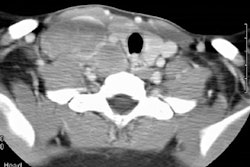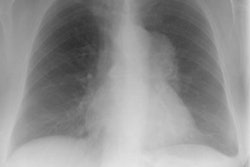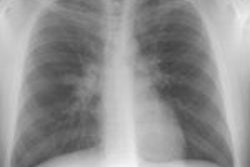Pulmonary lymphangiectasis:
Clinical:
Pulmonary lymphangiectasis is a congenital disorder that causes dilatation of septal, subpleural, and peribronchial pulmonary lymphatics [1]. Approximately 50% of affected infants are stillborn and others usually die of respiratory distress within hours of birth [1]. It is probably more common in males and it is associated with Down and Noonan syndromes [1]. It is also associated with cardiac anomalies such as total anaomalous pulmonary venous return, hypoplastic left heart, atriventricular valve defect, and pulmonic stenosis [1]. A few cases affect only one or two lobes of a single lung and can be treated with resection [1].
X-ray:
CT findings demonstrate ground glass opacity, smooth interlobular septal thickening, marked pleural thickening, and mediastinal soft tissue infiltration [1]. Lung finding may be concentrated in the perihilar and subpleural regions [1]. Up to 15% of patients may have pleural effusions that are often chylous [1].
REFERENCES:
(1) AJR 2009; Raman SP, et al. Imaging of thoracic lymphatic diseases. 193: 1504-1513



